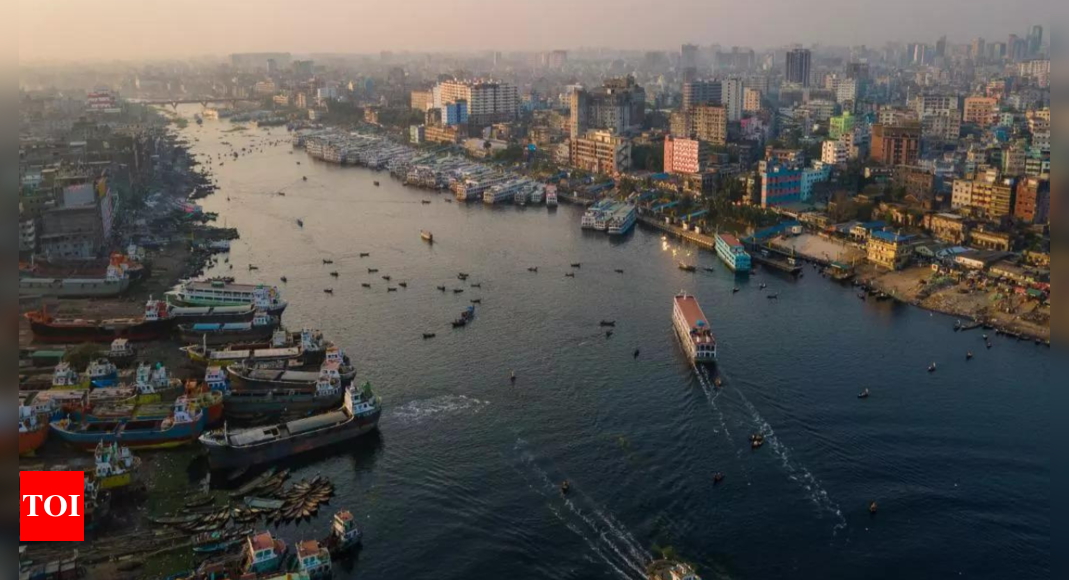
DHAKA: Flooding in Bangladesh has swept away homes and shut schools, displacing tens of thousands of people, the disaster and relief ministry said on Tuesday, and a forecast for more heavy rain over the next few days is expected to worsen the situation.
Some 40,000 people are taking refuge at government shelters and more than 600 medical teams have been formed to treat flood victims, the ministry said.
Television footage showed inundated roads, broken bridges and dams, as well as villagers wading through knee-deep water. Farmers also had to rescue cattle from the gushing waters.
“Bangladeshis are used to flooding, but the water is coming up so high and so quickly in low-lying areas that people are being forced to shelter on anything, even rafts made of banana trees,” said Liakath Ali, head of climate change program at development agency BRAC.
The local meteorological office has forecast more rain for the central and southern regions, but the swollen Brahmaputra river is expected to recede in the next few days.
“Heavy rains in the Indian upstream region mean that the suffering is far from over. We have taken measures to cope with the situation,” said Rezwanul Rahman, the head of Bangladesh’s disaster management department.
Seasonal monsoon rains, which start at the end of May, have triggered widespread flooding in India and neighbouring Bangladesh in recent years.
Floodwaters have started receding in India’s Assam, located north of Bangladesh, authorities said, bringing some respite to the 48,000 or so people sheltering in camps. During the last 24 hours, six people died due to rain and flood-related incidents, raising the death toll to 72 in the state since May.
More than 2 million people have been affected by the floods in Assam. The Kaziranga National Park, home to the rare one-horned rhinoceros, was also inundated.
A heavy downpour early on Tuesday in the National Capital Region of Delhi and its suburbs disrupted traffic and just over a week ago, unusually heavy rain in the capital New Delhi caused a roof at the airport terminal to collapse. This week, heavy rains flooded roads and railway lines in the financial capital Mumbai, disrupting flights and forcing schools to close.
Some 40,000 people are taking refuge at government shelters and more than 600 medical teams have been formed to treat flood victims, the ministry said.
Television footage showed inundated roads, broken bridges and dams, as well as villagers wading through knee-deep water. Farmers also had to rescue cattle from the gushing waters.
“Bangladeshis are used to flooding, but the water is coming up so high and so quickly in low-lying areas that people are being forced to shelter on anything, even rafts made of banana trees,” said Liakath Ali, head of climate change program at development agency BRAC.
The local meteorological office has forecast more rain for the central and southern regions, but the swollen Brahmaputra river is expected to recede in the next few days.
“Heavy rains in the Indian upstream region mean that the suffering is far from over. We have taken measures to cope with the situation,” said Rezwanul Rahman, the head of Bangladesh’s disaster management department.
Seasonal monsoon rains, which start at the end of May, have triggered widespread flooding in India and neighbouring Bangladesh in recent years.
Floodwaters have started receding in India’s Assam, located north of Bangladesh, authorities said, bringing some respite to the 48,000 or so people sheltering in camps. During the last 24 hours, six people died due to rain and flood-related incidents, raising the death toll to 72 in the state since May.
More than 2 million people have been affected by the floods in Assam. The Kaziranga National Park, home to the rare one-horned rhinoceros, was also inundated.
A heavy downpour early on Tuesday in the National Capital Region of Delhi and its suburbs disrupted traffic and just over a week ago, unusually heavy rain in the capital New Delhi caused a roof at the airport terminal to collapse. This week, heavy rains flooded roads and railway lines in the financial capital Mumbai, disrupting flights and forcing schools to close.









